How to Tighten Neck Skin
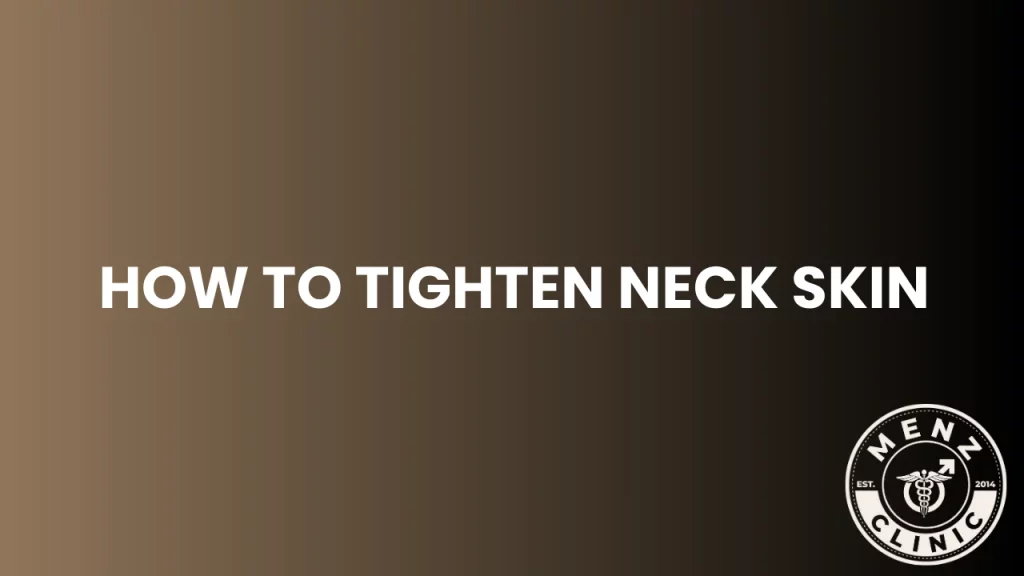
As we age, the skin on our neck can lose its elasticity, resulting in sagging or loss of skin that can be difficult to address. This is a common concern for many, and while it’s a natural part of aging, there are several ways to tighten neck skin. In this blog we will explore various methods from lifestyle changes and home remedies to advanced cosmetic procedures, to help you understand how to tighten neck skin effectively. Before diving into the solutions for tightening neck skin, it’s important to understand why this issue occurs in the first place. The skin on the neck is thinner and more delicate than other areas, making it more susceptible to aging. Skincare Routine for Tighten Neck Skin To firm your neck, get into a skincare routine and healthy habits. Start with daily cleansing with a gentle cleanser for your skin type to remove impurities and prevent sagging. Exfoliate 2-3 times a week with products containing AHAs or BHAs to boost cell turnover. How to tighten neck skin? follow with a toner that balances pH and prepares your skin for other products, one with hydrating ingredients like hyaluronic acid. Daily moisturizing that contains glycerin or ceramides will keep your skin plump. And don’t forget broad-spectrum with at least SPF 30 every morning to prevent UV damage that can age your skin. At Home Remedies Try these remedies to get the answer to your question “How to tighten neck skin?” An egg white mask is great for this. Whisk an egg-white till fourthly, apply to your leave for 15 minutes, and raise with lukewarm water. Aloe vera is known for its repairing and tightening properties, apply fresh aloe vera gel directly from the plant, spread it on your neck for leave for 20 minutes, and rinse to soothe and rejuvenate your skin. Another one is honey and lemon, where honey moisturizes and lemon is an astringent, mix them, apply to your neck and leave for 15 minutes before rising. Coconut oil can be massaged in upward strokes on the neck because of its nourishing fatty acids and antioxidants that can help to improve skin elasticity and firmness when used regularly. Cooled green tea applied with a cotton ball for 10-15 minutes can also help the skin, green tea antioxidants help to tighten and tone. Yogurt with a pinch of turmeric is an exfoliant and anti-inflammatory. It is applied 10-25 minutes before rising to improve skin texture. Avocado masks rich in healthy fats and vitamins can be applied to the neck for 15 minutes to hydrate and firm the skin using these remedies consistently along with a healthy lifestyle can give firmer and healthier-looking neck skin. Tighten Neck Skin Advanced Treatments If you want more advanced treatment to tighten and rejuvenate neck skin, there are several professional options available that will give you more dramatic and immediate results than at-home remedies. This treatment requires a consultation with a dermatologist or cosmetic doctor and get an answer on “how to tighten neck skin?. Laser Lasers use targeted light energy to stimulate collagen production and improve skin texture. Different lasers such as fractional CO2 laser non-ablative can tighten skin and reduce wrinkles. This treatment usually requires multiple sessions and will give you noticeable results in skin firmness and elasticity. UltraSound Therapy Ultrasound therapy like ultra-therapy uses focused ultrasound energy to heat the deeper layers of the skin, stimulate collagen production, and tighten the skin. This non-invasive treatment will give you lifted and youthful-looking skin on the neck with minimal downtime. Radiofrequency Treatments Radiofrequency treatments like thermage use radiofrequency energy to heat the dermis, promote collagen and elastin production. This will tighten and firm the skin RF treatments are usually non invasive with minimal downtime and will give you noticeable results in skin tightness. Microneedling Microneedling uses a device with fine needles to create punctures in the skin which triggers the body’s natural healing response and stimulates collagen production. When combined with radiofrequency RF this treatment will give you more results by further tightening the skin and improving texture. Injectable Treatments Injectables such as dermal fillers and neuromodulators (like Botox) can be used to improve the neck. Fillers can add volume and smooth out wrinkles, Botox can relax which causes skin creases. These treatments will give you immediate results and are often used in combination for a full approach. PDO Thread Lifts PDO (polydioxanone) thread lift involves inserting dissolved threads into the skin to lift and tighten sagging areas. The threads will stimulate collagen production as they dissolve, giving you gradual results over several months. Surgical Options For more severe sagging, surgical options like neck lift may be considered. This involves removing excess skin and tightening the underlying muscles to get a more country and youthful-looking neck. It’s a more invasive option with longer downtime but will give you dramatic and long-term results when you think about how to tighten neck skin. These advanced treatments will give you more results in skin tightness and overall appearance. Consult with a qualified healthcare professional to know which treatments are for you and your skin and discuss how to tighten neck skin. LifeStyle Considerations Your skin from UV rays that can age you exercise is good for circulation and skin tone so do activities that target the neck and jawline. Adequate sleep is important for skin repair so aim 7-9 hours of good sleep each night. Good posture prevents sagging by avoiding downwards angles and not smoking prevents loss of skin. When any person thinks about how to tighten neck skin youthfully, managing stress through mindfulness and medication and limiting alcohol to avoid dehydration also helps to keep skin youthful. By incorporating these habits into your daily life you can support your neck skin big time. Conclusion To have firm youthful neck skin is a holistic approach that combines good skin care, advanced treatments, and healthy habits. In this blog, we provide information according to your question “How to tighten neck skin”. Daily
Peyronie’s Disease Exercises
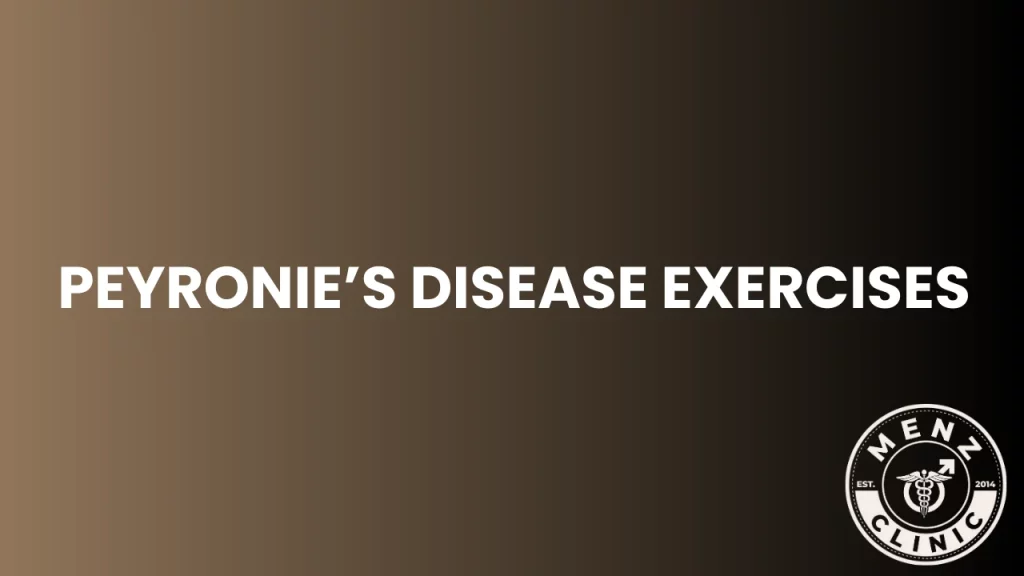
Peyronie’s disease exercises are a productive solution, for discomfort forms on the top or bottom part of the penile, causing it to curve or bend. Peyronie’s disease can lead to pain during sexual intercourse, it also causes difficulty engaging in sexual activity. This disease is not because of infection or cancer, while it is not a contagious disease. Peyronie’s disease can affect a man’s sexual health and overall quality of life, leading to anxiety and depression. Whatever medical treatments and surgical options are available, lots of men seek alternative methods, like exercises, to manage the symptoms of this disease. In this guide post, we’ll explore its symptoms, the potential benefits of exercises, and some effective exercises for managing to improve penis health and flexibility. Causes of Peyronie’s Disease Peyronie’s disease exercises can help the penis to avoid discomfort by causes like, curvature and shortening of the penis .In some cases, the plaque develops centrally, leading to indentation and shortening. These exercises help to avoid pain, bending, and emotional distress may then limit sexual intercourse; and Erectile dysfunction (impotence). Peyronie’s Occurs due to the effect of plaque reducing blood flow in the penis, but can also cause a loss of sexual confidence because of the change in shape of the penis. Once Peyronie’s disease develops, it usually changes the penis permanently. While most treatments can limit the effect of the condition on the penis, nothing can take the penis back to how it was before. Peyronie’s Disease Exercises Importance Careful exercise plays a crucial role in managing this disease, peyronie’s disease exercises works as: Improving blood flow as increased circulation can help in the healing process and potentially reduce scar tissue. It also strengthens pelvic floor muscles: A strong pelvic floor can improve erectile function and overall sexual health. Reducing anxiety and stress, means physical activity is a natural way to alleviate stress and anxiety, which can contribute to sexual dysfunction. With regular exercise maintaining overall health: Promotes general well-being and can mitigate other health problems. Top 5 Peyronie’s Disease Exercises Peyronie’s disease exercises like kegel exercises strengthen the pelvic floor muscles, which can help with erectile function and control pain during sex. Its procedure starts from first Identifying the Muscles, the way to find your pelvic floor muscles is to stop urination midstream. After that Contract and Hold, means squeeze the pelvic floor muscles for 5 seconds, then relax muscles for 10 seconds at last, do repetitions, aim for 20 repetitions, three times daily. These exercises work to gently stretch the tissue of the penis to help alleviate curvature over time for penile health. Process of doing this exercise is easy, such as warm-ups, starting with a warm compress on the penis to increase blood flow and relax the tissue. After completing this come stretch, hold the head of the penis with one hand and pull it gently away from your body. Maintain a firm grip but avoid moving fastly, at last side stretches: After the initial stretch, gently pull the penis to the left and then to the right, holding each position for 30 seconds. Jelqing is a best stretching peyronie’s disease exercises that aims to increase penile length and girth while potentially reducing curvature for penile comfort. Procedure of doing this exercise is easy, such as the first warm-up. Similar to the stretching exercise, begin with a warm compress for blood flow increcement. Then comes Lubricate, applying a water-based lubricant to the penis.And at the end pull the penile, towards the tip of the penis, repetitions cac be 10-20, stopping if you feel any discomfort or pain. Stretching and yoga can improve flexibility, reduce tension, and promote relaxation, which is beneficial for men experiencing the stress of Peyronie’s disease and discomfort during sex. Way of performing this exercise is first of all comes, select poses, incorporate poses that stretch the hips, pelvis, and lower back, such as the butterfly pose, child’s pose, and forward bends. Then start breathing techniques, focus on deep, controlled breathing to help relieve anxiety. And lastly, do at least 15 to 30 minutes of yoga or stretching exercises. Peyronie’s disease exercises, such as cardiovascular exercise like walking, jogging, cycling, or swimming can improve overall circulation and healthy penis. Procedure for doing this process begins from frequency, for at least 2 hours of moderate aerobic activity or 75 minutes of vigorous activity every week. At the last, incorporate Strength Training, include strength training exercises at least two days a week for overall fitness of body. Risk and Consideration of Peyronie’s Disease Peyronie’s disease issues should consider that PD is a symptom complex that may compromise sexual function but does not appear to affect survival. Given this context in pursuing a treatment plan, the clinician should carefully weigh the potential benefit to the patient of a particular treatment against that treatment’s risk for adverse events, the severity of adverse events, and the reversibility of adverse events. For some patients, thoughtful counseling regarding the nature of PD. And the typical disease course may be sufficient to alleviate concerns. The guideline statements in this section are intended to provide a framework to assist the clinician in counseling patients and in developing an individualized treatment plan that optimizes sexual function. Summary Peyronie’s disease exercises along with medical treatments and psychological support can play a vital role in improving quality of life. Peyronie’s disease can occur at any age, although it is seen mostly in middle‑aged men. This begins as a localized inflammation, which may then mature into a hardened scar. The scar is inelastic (stiff) and stops the penis stretching with erections, leading to the development of a curvature on erection. Peyronie’s disease can be decreased by doing perfect exercise, surgery and through medications. For best results always consult a medical expert before starting any new exercise, treatment or regimen process. Dr.J MD an sexual health specialist also expert in cosmetic, and other surgical procedures.
Can Carpal Tunnel Cause Shoulder Pain
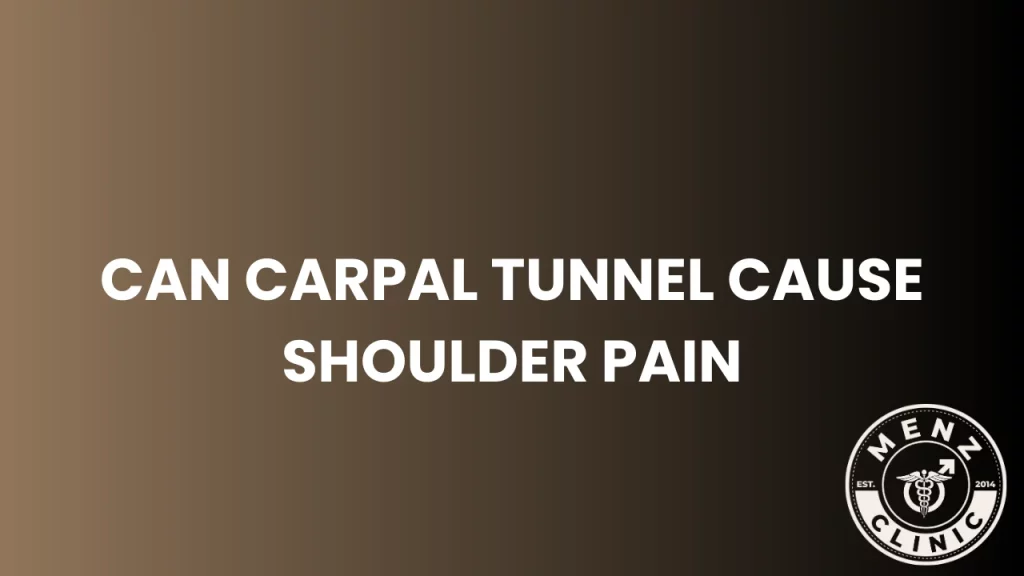
Can carpal tunnel cause shoulder pain, carpal tunnel syndrome CTS is a common condition where the median nerve running from the forearm into the palm of the hand gets compressed at the wrist. The nerve passes through a narrow tunnel in the wrist called the carpal tunnel. When the tunnel narrows or the tissues around the median nerve swell it can cause symptoms like tingling, numbness, and weakness in the hand and fingers patients with severe CTS or whose symptoms have not improved after 4-6 months of conservative treatment should be offered surgery. Endoscopic and open surgery are equally effective but patients return to work an average of one week earlier with endoscopic surgery. Differentiating Carpal Tunnel Syndrome Can carpal tunnel cause shoulder pain, Shoulder pain can be caused by many things. Carpal Tunnel syndrome is a condition of the wrist and hands but many other conditions can mimic the symptoms. CTS can be confused with other conditions. When you suspect the CTS or any other conditions see a healthcare professional for full evaluation and management. Note CTS symptoms can overlap with or be confused with this question, can carpal tunnel cause shoulder pain? other medical conditions such as rotator cuff injuries, cervical spine issues or thoracic outlet syndrome. Each of these conditions has its own set of causes and treatments so a precise diagnosis is needed. Can Carpal Tunnel Syndrome Cause Shoulder Pain? While carpal tunnel syndrome affects the hands and wrist, it can sometimes radiate to other parts of the upper body. It’s not common but some people with severe or prolonged CTS may experience pain that goes up the arm to the shoulder. This is because the nerve and muscles in the upper extremities are connected. Can carpal tunnel cause shoulder pain? Yes, shoulder pain is a symptom of carpal tunnel syndrome. Weird right? The pinching of the median nerve doesn’t just affect your hand. You may feel pain or numbness in every muscle and joint between the tips of your fingers and the top of your brain. So if you’re wondering can carpal tunnel cause shoulder pain? The answer is yes, it can. Digansonic and Treatment If you think carpal tunnel is causing shoulder pain you need to see a healthcare professional for a diagnosis. When you get an answer to this question with a healthcare professional can carpal tunnel cause shoulder pain? These are the steps involved in diagnosing CTS. F CTS is based on disease severity. Mild to moderate CTS a trial of conservative treatment is recommended. Severe CTS or nerve damage on electrodiagnostic studies should be offered surgical decompression. Conservative treatment modalities are splitting, corticosteroids, physical therapy, therapeutic ultrasound and yoga. Treatment Options Treatment for carpal tunnel syndrome CTS and shoulder pain usually involves a multi faceted approach to relieve symptoms and address the root causes. That means ergonomic adjustments to position the wrist, wrist splints to keep the wrist in neutral, and medications or corticosteroid injections to reduce inflammation. Physical therapy plays a big role, with exercises to strengthen and stretch the wrist and shoulder, and to address any bad posture or compensatory movements that may be contributing to the question, can carpal tunnel cause shoulder pain?. In more severe cases surgery may be an option to relieve pressure on the median nerve. Don’t do things that make symptoms worse and give your hands and wrists a break. Wearing a wrist splint can help keep the wrist in a neutral position and reduce pressure on the median nerve. Exercises and stretches can strengthen the muscles in the hand, wrist and shoulder and help symptoms. NSAIDs can help with pain and inflammation. Corticosteroid injections into the carpal tunnel can give temporary relief. In some cases surgery may be needed to relieve pressure on the median nerve. Preventing Carpal Tunnel Syndrome and Shoulder Pain To avoid carpal tunnel syndrome and shoulder pain you need to reduce the load on your hands and wrists. Take breaks during repetitive tasks like typing or mouse use and you’ll reduce the stress on those areas. Use ergonomic tools like a supportive keyboard or mouse pad to keep your hands and wrists in line and prevent carpal tunnel syndrome. Wrist, forearm and shoulder exercises will increase flexibility and reduce discomfort or injury. Good posture and having your workspace set up correctly will support your efforts to prevent carpal tunnel syndrome and shoulder pain. Make sure your workspace is set up to not put strain on your hands and wrist. Take breaks to stretch and rest your hands and wrist especially if you do repetitive activities. Conclusion Carpal tunnel syndrome is primarily in the hand and wrist but can also cause shoulder pain. This can be due to referred pain where, can carpal tunnel cause shoulder pain? in the wrist or hand radiates to the shoulder. It can also be due to compensatory movement where the body adjusts its position or movement to reduce pain and strains the shoulder. Secondary conditions like muscle tension or nerve compression can also be a factor. Knowing the link between CTS and shoulder pain is key to identifying the underlying causes and treatment. Knowing the link between Carpal Tunnel Syndrome (CTS) and shoulder pain is key to diagnosis and treatment. If you have CTS or shoulder pain symptoms see a healthcare professional for an assessment and management. Prevention also reduces the risk of getting these conditions and overall wellness.
Pain on The Inside of Elbow When Straightening The Arm after workout
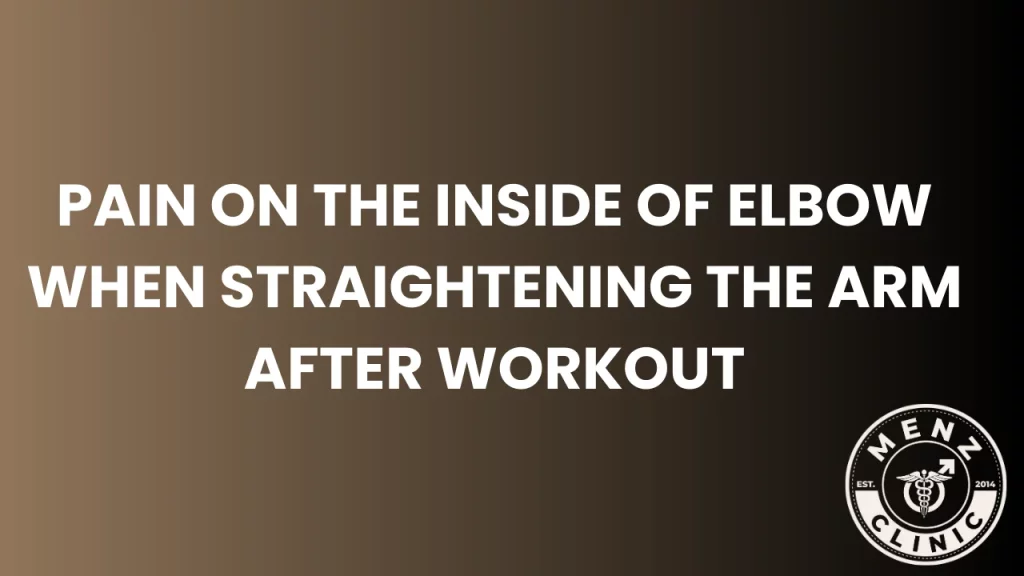
This is often caused by repetitive arm movements or heavy lifting. Medial epicondylitis or “golfer’s elbow” is when the tendons that connect the forearm muscles to the inside of the elbow become inflamed or strained. Pain on the inside of your elbow when you straighten your arm after a workout means discomfort or tenderness on the inside of your elbow. It feels like a sharp or aching pain when you straighten your arm or grip something.Rest, ice, anti-inflammatory and physical therapy can fix this. Proper warm up, good form and gradual increase in intensity can prevent this type of elbow pain. What is Pain on the Inside of the Elbow When Straightening Arm After Workout? Elbow pain on the inside of the elbow when you straighten your arm after exercise is called medial epicondyle pain. It’s caused by strain or injury to the tendons and muscles that attach to the medial epicondyle, the bony lump on the inside of the elbow. This is often associated with medial epicondylitis, also known as “golfer’s elbow” but it can affect anyone who does repetitive arm movements, not just golfers. Lifting weights, playing tennis or even repetitive typing can cause this kind of discomfort. The pain is usually due to overuse or poor technique during exercise. It becomes more noticeable when you straighten your arm as this stretches the affected tendons and muscles. To address and prevent this kind of pain you need to identify the specific exercises and techniques that are putting strain on your elbow. You may need to adjust your exercise routine, improve your form or incorporate rest and recovery. Stretching and strengthening exercises along with proper warm-up and cool-down can help reduce the risk of getting medial epicondyle pain. If the pain persists you may need to seek advice from a healthcare professional such as a physical therapist or an orthopedic specialist for proper treatment and management. Causes of Pain inside of the Elbow Elbow pain on the inside when you straighten your arm after a workout can come from many sources. This affects people who do activities that require repetitive arm movement like lifting weights or sports. Poor technique, inadequate warm up, overloading the elbow joint with too much weight can also cause pain in this area. Knowing these causes will help you identify the right treatment and prevention to manage and get rid of elbow pain. Another cause is a strain or tear in the flexor tendons that attach to the medial epicondyle which can happen from sudden or intense physical activity. One of the most common is medial epicondylitis or golfer’s elbow which is caused by repetitive stress and overuse of the forearm muscles and tendons. Treatment for Pain on Inside of Elbow Treating pain on the inside of the elbow when you straighten your arm after a workout involves several ways to make it go away and heal. Rest is key; taking a break from activities that strain the elbow allows the inflamed tissues to recover. Wearing a brace or compression sleeve can give you extra support and reduce stress on the elbow. In more severe cases a doctor may recommend cortisone injections to reduce inflammation or as a last resort surgery to repair the damaged tendons. Combining these methods can make the pain on the inside of the elbow go away and get you back to normal activities. Ice the area for 15-20 minutes several times a day to reduce swelling and pain. Over-the-counter anti-inflammatory meds like ibuprofen or naproxen can also help. Physical therapy exercises that focus on stretching and strengthening the forearm muscles and tendons can help with recovery and prevent future injuries. Risk Factors for Pain on The Inside of Elbow When Straightening Arm After Workout There can be many risk factors for pain inside the elbow when straightening the arm after a workout. One big one is the intensity and frequency of the workouts. High-intensity exercises or repetitive movements especially those that involve heavy lifting or lots of arm movement can increase the risk. Poor form or technique during exercises can put unnecessary stress on the elbow joint and surrounding muscles and cause discomfort and injury. Pre-existing conditions like tendinitis, arthritis, or previous elbow injuries also increase the risk. Prevention of Pain on Inside of Elbow When Straightening Arm After Workout To avoid the pain in your elbow on the inside when you straighten your arm after a workout you need to do several things. First warm up before any exercise, this prepares the muscles and tendons for the exercise to come. Second, do stretching exercises before and after your workout to keep flexibility and reduce the risk of injury. Third focus is strengthening the muscles around the elbow with targeted exercises to support and stabilize the joint. Use proper form and technique during exercises to not put too much stress on the elbow. And listen to your body and don’t overdo it, rest and recovery time between workouts. By following these tips you will reduce the chance of pain on the inside of your elbow when you straighten your arm after a workout. Summary Inside elbow pain when you straighten your arm after a workout is a common issue caused by overuse, bad technique or sudden increase in activity. Knowing the causes and doing the right treatment and prevention will help you manage the pain and continue your fitness journey. By paying attention to form, warming up and doing strengthening exercises you can reduce the discomfort and have a pain free workout. Don’t ignore elbow pain, it can lead to chronic issues if left untreated. Early intervention, proper treatment and prevention will mean long term elbow health and optimal performance. Remember taking care of your body and listening to it is key to a healthy and active life.
Radial Wrist Pain Treatment
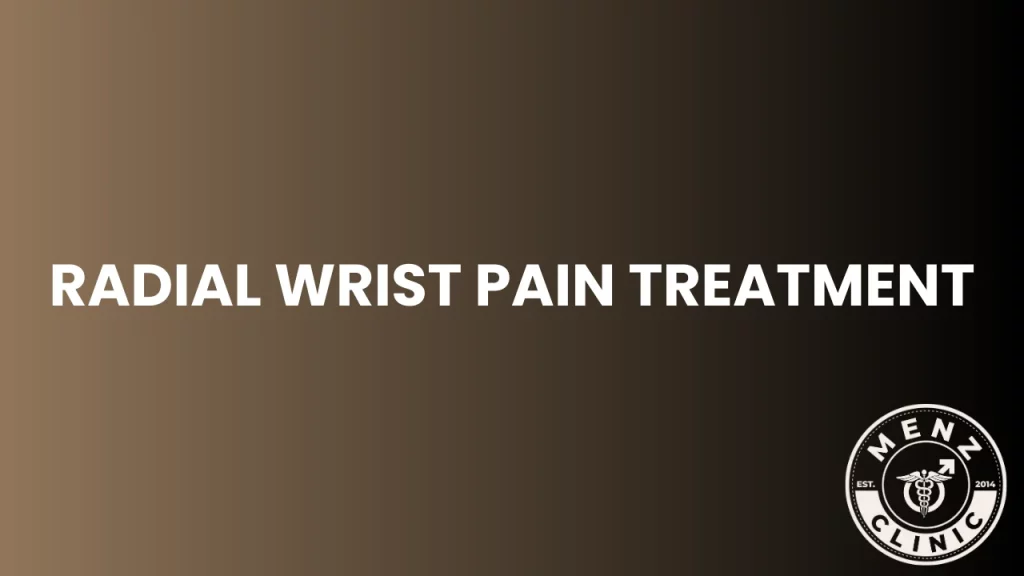
Radial wrist pain treatment is best for individuals, those that have issues of this pain. It affects various age groups and lifestyles. This problem mainly on the thumb side of the wrist, it can arise from some causes, like injury, and medical conditions. This is an effective treatment solution that is important for effective management and recovery of radial wrist pain. Wrist pain refers to pain seen on the radial side of the wrist in the body. Radial side of the wrist has several structures,such as bones, tendons, nerves and ligaments. That’s why making it susceptible to various problems. This blog provides effective solutions for exploration of radial wrist pain, including its causes, diagnostic methods, and effective solutions for radial wrist pain. Causes of Radial Wrist Pain Radial wrist pain treatment is important, because many structures of the body are connected at the radial side of the wrist. If problems arise in this area of the body, it will be dangerous for people. Here are some causes of radial wrist pain, below are scaphoid fractures, wrist sprains and strains, quervain’s tenosynovitis, carpal tunnel syndrome, rheumatoid arthritis, ganglion cysts, and radial styloid synovitis. scaphoid fractures means fractures in scaphoid bone, often caused by falls or trauma, can cause significant pain and swelling. Scaphoid bone, one of the eight small bones in the wrist, is located on the radial side. Wrist Sprains and Strains arise after injuries occur due to overstretching or tearing of the ligaments and tendons. These are commonly caused by trauma, falls, or repetitive stress. Need radial wrist pain treatment can be because of quervain’s tenosynovitis, this condition involves inflammation of the tendons on the thumb side of the wrist, leading to pain and swelling. It is often related to repetitive movements. Carpal tunnel syndrome though more commonly associated with the median nerve, carpal tunnel syndrome can sometimes present with radial wrist pain if the condition affects surrounding structures of the body. Rheumatoid arthritis autoimmune condition can affect the wrist joint, leading to pain and stiffness on the radial. Ganglion cysts fluid-filled sacs can develop on the wrist and cause discomfort, particularly if they press on nearby structures of the body Radial styloid synovitis is inflammation of the synovial lining around the radial styloid (a bony prominence on the wrist) can cause localized pain. How to Diagnose Radial Wrist Pain? If you want Radial wrist pain treatment diagnosis accurately,then the diagnostic process typically involves some factors like physical examination, medical history, laboratory tests, and imaging studies. Accurate diagnosis is crucial for effective treatment. Physical examination during the physical exam, your healthcare provider will assess the range of motion, tenderness, and swelling in the wrist. They may also perform specific tests to identify conditions like scaphoid fractures. Radial wrist pain treatment diagnosis perfectly with the help of laboratory tests. These are important in some cases where an inflammatory or autoimmune condition is suspected, blood tests may be conducted to check for markers of inflammation or autoimmune activity. Imaging studies depending on the suspected cause, imaging studies may be required, X-rays: Useful for identifying fractures, dislocations, and some forms of arthritis. MRI: Provides detailed images of soft tissues, useful for diagnosing tendon injuries or tears.Ultrasound: Can help visualize inflammation, fluid accumulation. Best Radial Wrist Pain Treatment Options Radial wrist pain treatment is for radial wrist pain that relies on the specific cause. These primary goals are to radial wrist pain, overcome inflammation, and restore function. Treatment solutions can be surgical and non-surgical techniques. Surgical Radial Wrist Pain Treatments Surgical treatments when non surgical measures fail to provide relief or when there is a significant structural issue, surgical intervention may be necessary. Some surgical options are fracture fixation, tendon repair, decompression surgery, and arthroscopy. Mostly used wrist pain treatment is tendon repair means, If a tendon is damaged or torn, surgical repair may be required. This process involves repairing the damaged tendon to restore function in the human body. Decompression surgery may be performed to relieve pressure on the affected nerves in the body and this treatment can manage your pain. Radial wrist pain treatment is also possible with arthroscopy. Small incisions are made, and a camera Arthroscope is inserted to visualize the interior of the wrist joint. This technique can be used to address issues such as scaphoid fractures. Non Surgical Radial Wrist Pain Treatments There are some non surgical radial wrist pain treatments including ice therapy, physical therapy, Over-the-Counter Medications, Compression and Elevation. We will further elaborate in our discussion below. Ice therapy process, first applying ice to the affected area can help reduce swelling and numb the pain. It is generally recommended to apply ice for 15-20 minutes every 2-3 hours. A physical therapist can design the best exercise program to improve strength, flexibility, and range of motion. approaches such as ultrasound therapy, manual therapy, and stretching exercises can give best solutions. Radial wrist pain treatment may be done with medications like nonsteroidal anti-inflammatory drugs , such as ibuprofen or naproxen. Which can help alleviate pain and reduce inflammation, always use these medications according to the recommended dosage. Compression and elevation works with an elastic bandage or wrist brace can provide compression and support, reducing swelling. Elevating the wrist above heart level also helps decrease swelling and pain. The End Radial wrist pain treatment is a successful answer for the people who have spiral wrist torment, however with a thorough comprehension of its causes and suitable therapy systems, tending to spiral wrist torment really includes a mix of clinical intercession, way of life changes, and continuous care,it ought to be legitimate. Best radial wrist pain treatments are productive with, selection of good health care provider, and some other factors as diagnosis of radial wrist pain, after that choose best treatment for radial wrist pain. You can book a free appointment at Menz Clinic in Orlando, FL. In this Clinic Dr.J MD an expert in personal health and wellbeing is treating. He is expert in effective treatments, such as
